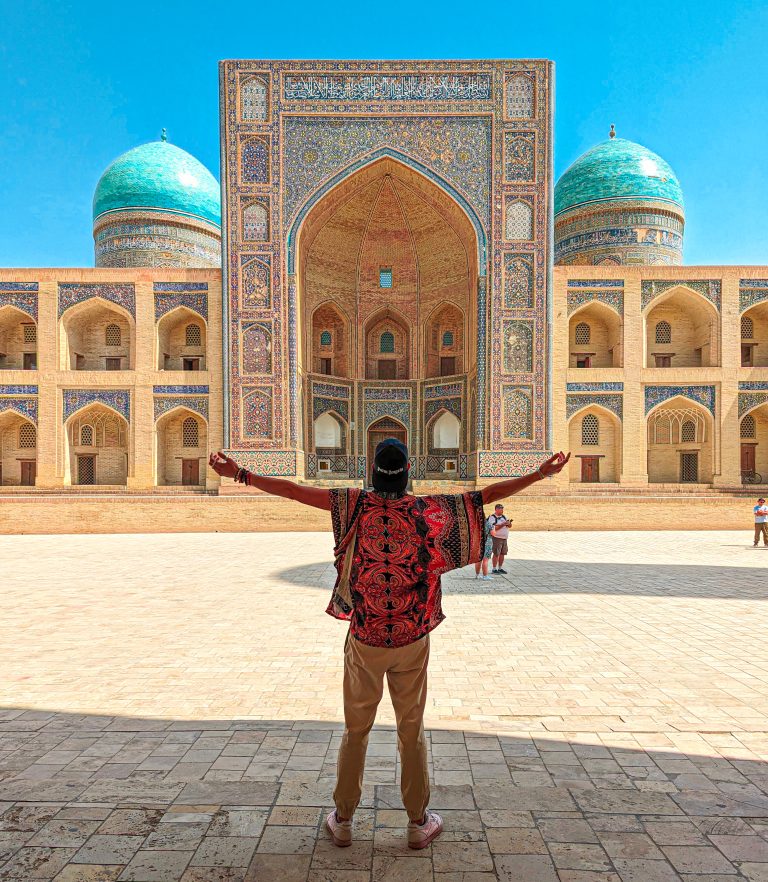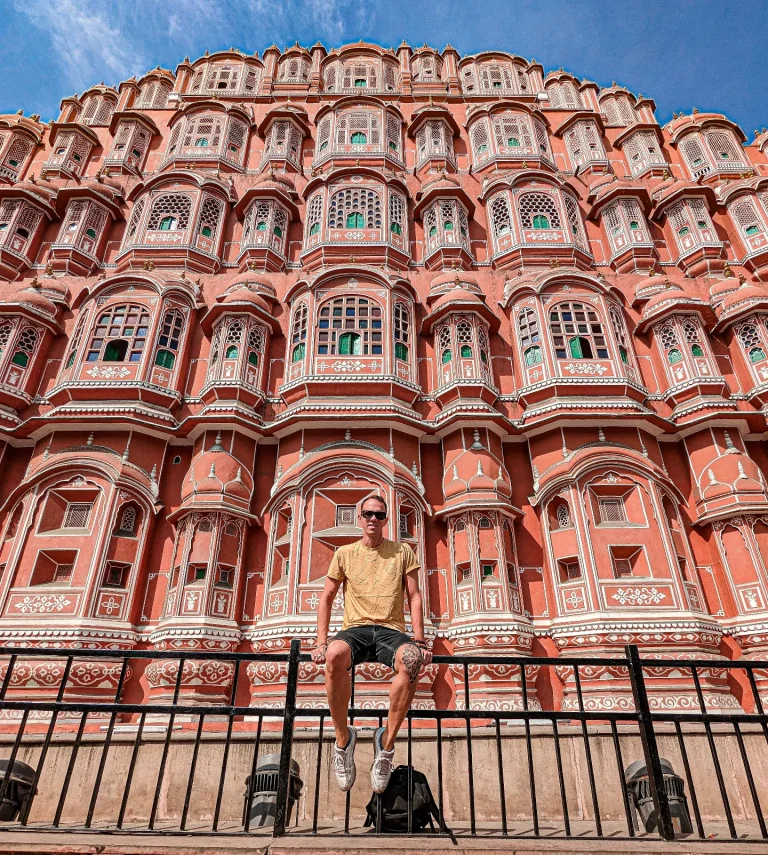One month Backpacking Balkans itinerary
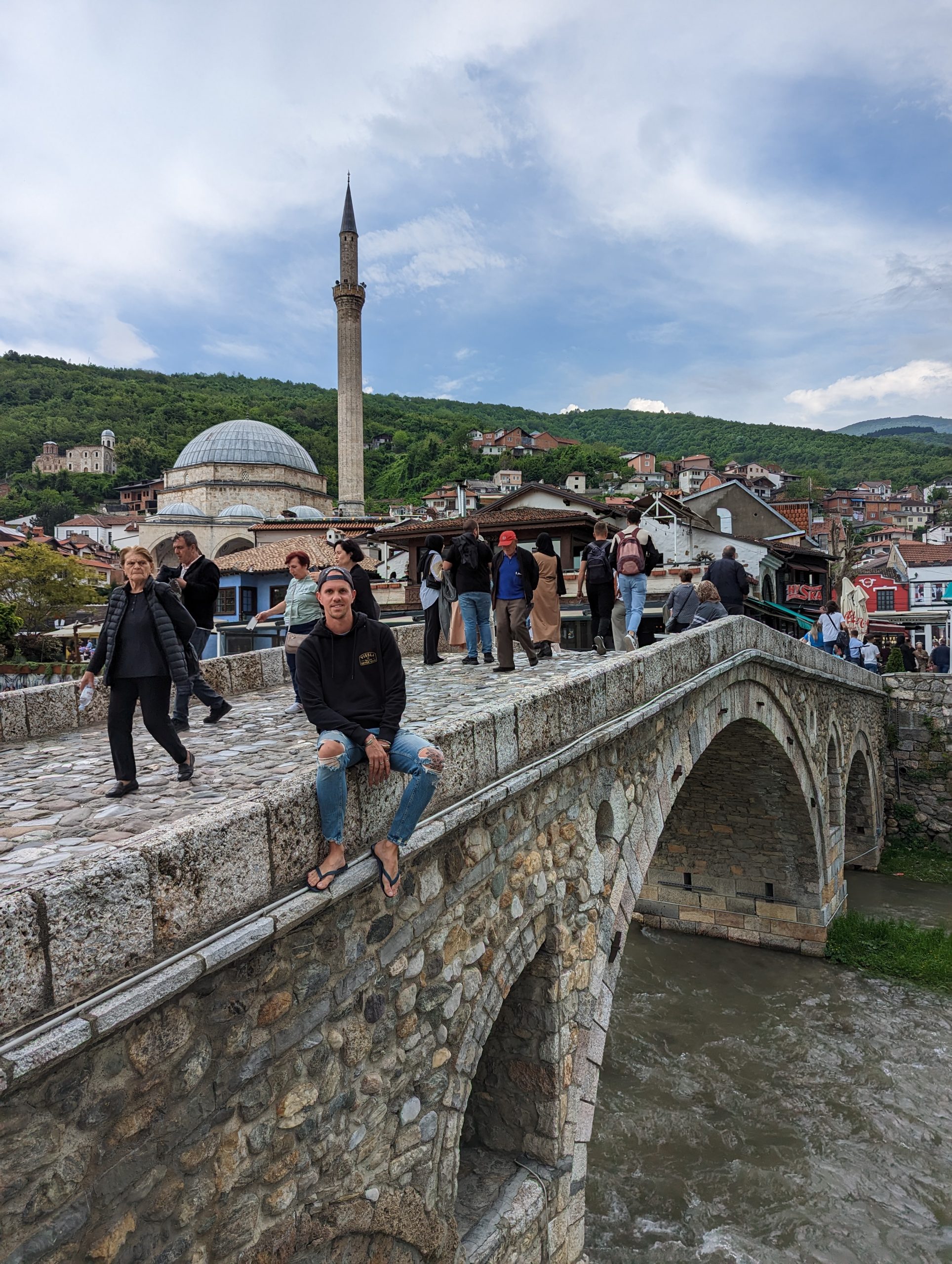
For many, the great unknown in Europe, has an incredible nature and a cultural wealth totally different from the rest of Europe.
Orthodox Christian Churches in Serbia, Mosques in Albania and Kosovo… Mediterranean, Turkish and Eastern European gastronomy. A cultural mix awaits you in this unknown region on the shores of the Adriatic.
Welcome to the Balkans:
- Best time of year to visit the Balkans
- Basic tips for the Balkans
- 24 day Balkans itinerary
- Days 1 and 2: Kotor (Montenegro)
- Day 3: Budva (Montenegro)
- Day 4: Podgorica (Montenegro)
- Days 5 and 6: Shkoder (Albania)
- Days 7 and 8: Tirana (Albania)
- Day 9: Prizren (Kosovo)
- Days 10 and 11: Pristina (Kosovo)
- Days 12 and 13: Skopje (North Macedonia)
- Days 14 and 16: Belgrad and Novi Sad (Serbia)
- Days 17 and 18: Sarajevo (Bosnia and Herzegovina)
- Days 19 and 21: Mostar (Bosnia and Herzegovina)
- Days 22 and 23: Bled (Slovenia)
- Day 24: Ljubljana (Slovenia)
- Daily budget in the Balkans
- Where to stay in the Balkans
- What to do if you have more days in the Balkans
Official exchange rate by country:
- Official exchange rate 1EUR = 100 Albanian Leks
- Official exchange rate 1EUR = 62 Macedonian Dinars
- Official exchange rate 1EUR = 117 Serbian Dinars
- Official exchange rate 1EUR = 1.96 Bosnia and Herzeg Convertible Marks.
Best time of year to visit the Balkans
There are two types of people in this world, those who like the cold and those who don’t. I prefer to melt from the heat in the Sahara than to be cold as I have ever been in the Baltics. The Balkans are no different in this regard. They are very hot in summer and covered in snow in winter.
Even in May when I went, I had to wear a sweatshirt almost every day. So don’t be overconfident and especially when you are not on the Adriatic coast in the long weekend seasons, take a jacket and long pants because it can get cold. Summers are usually hot inland and humid and hot on the Albanian Riviera and the Montenegrin coasts.
Basic tips for the Balkans
What always prevails is common sense, it is a fairly safe and quiet region, but here are a couple of tips & tricks.
- Kosovo Border: Kosovo is not officially recognized as an independent country by many nations (Spain among them). So its border is somewhat delicate depending on where you enter and exit. If you enter Kosovo via Serbia you can only leave Kosovo via Serbia. If you do it from Albania or North Macedonia you can visit Serbia but to leave you must do so through the first two.
- They are very cheap countries, especially Kosovo and Bosnia Herzegovina.
- None of them are Schengen areas except for Slovenia and Croatia. So if you are on your Schengen visa, a period of time in this area will be good for you to reset the counter to zero on your 90 days by 180.
- Flixbus is the key: The transportation system is a bit limited in terms of trains so you will have to make most of your trips by bus. Serbia has a good railway system but in the rest of the countries it is rather bad or non-existent.
- Recommended stay: Personally I think that 2 or 3 days per city is more than enough and a couple or three cities or regions per country are enough since many of the countries share similarities.
24 day Balkans itinerary
My route through the Balkans was something spontaneous and unplanned, I looked for the cheapest flight to Dubrovnik and I started traveling from Montenegro to Slovenia doing a loop. I went with zero expectations but it ended up being a great destination. Not only does that region have the backpacker atmosphere that one looks for when traveling, but it is a relatively little visited area and preserves the essence.
Days 1 and 2: Kotor (Montenegro)
Crossing from Dubrovnik is the easiest, you can take a bus from the central station which is in the farthest part of the old town. The trip, even if it is short, takes a long time. When the weather is good, the border is slow to cross, it takes us almost 4 hours and the trip costs about €35.
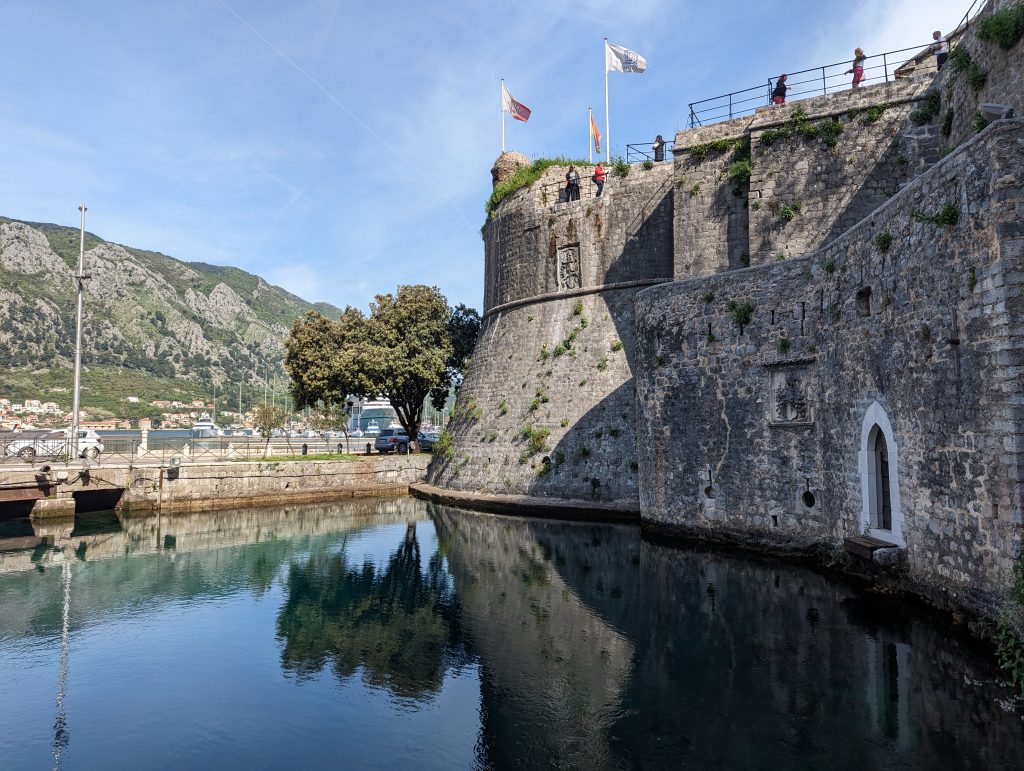
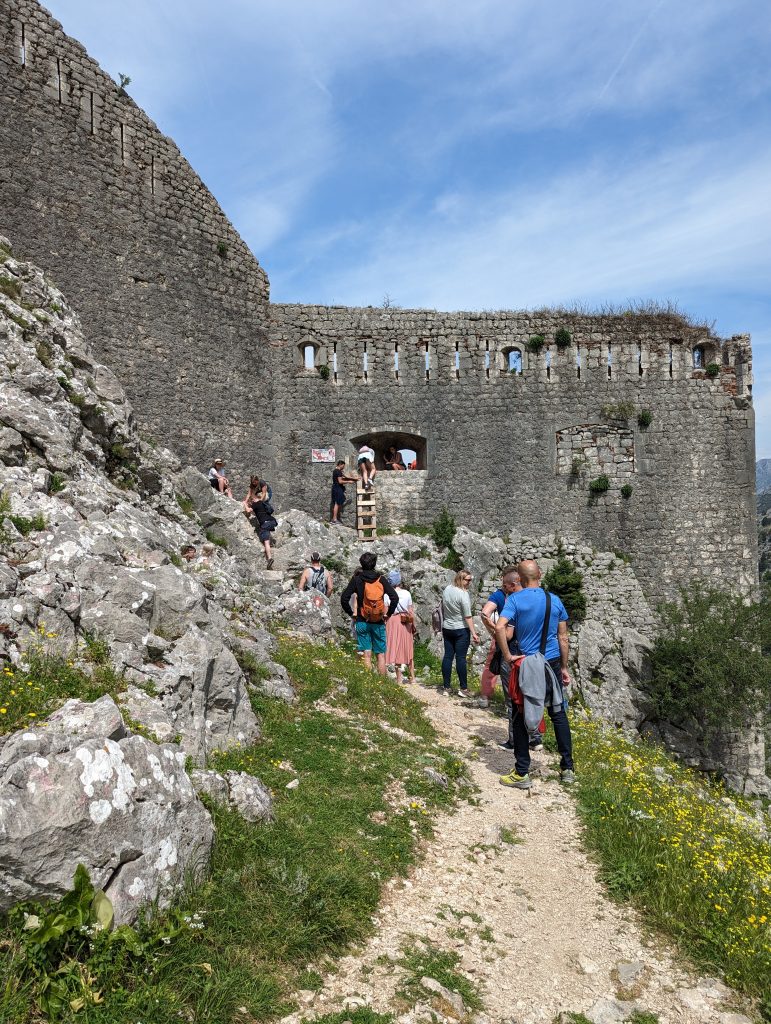
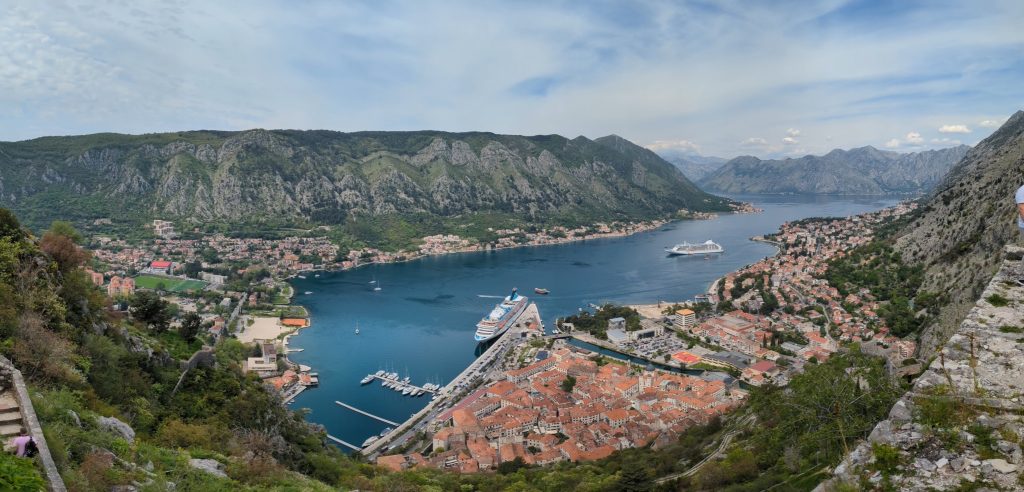
Kotor is ideal to spend several days but if you are a bit restless like me, 2 or 3 are enough for you. My recommendation is that you stay in the Old Town. When the cruise ships arrive, the city is flooded with people everywhere. So take advantage of lunchtime or the last moment of the day to visit the city.
Get up early when it’s not too hot to go up to St. John’s Castle and its Fortress to have the best views of the Bay of Kotor. If you don’t want to pay the entrance fee, go up the northern part of the mountainside and you will find a “ secret entrance” in a hole in the wall. We also took a sunset cruise along the bay from which we could see the island where the Church of Our Lady of Škrpjela is located.
Day 3: Budva (Montenegro)
Local transport between towns in Montenegro is very cheap and leaves quite frequently, the 1.5 hour bus to Budva cost me about €4.5 and they leave from 8am to 6pm one every hour in high season.
Budva is also a walled city, which is easily seen in one day. I dedicated an afternoon to exploring the citadel and the museum, which is quite worth it and costs about €5, and to follow the coastal path that takes you to a couple of beaches that you access via some caves and stone paths through of the rocks. You can also complement it with a visit to Stefan Sveti, about 15-20 minutes by bus from the city, it is the famous town on a rock that juts out into the sea. Although it is one of those places that are more magical from the air than from the ground.
Day 4: Podgorica andCetinja (Montenegro)
Cetinja was the capital of Montenegro many years ago, and much more beautiful than today. Proof of this is the large number of museums that you find in the city, several very well-preserved monasteries and churches and a historical center that Podgorica would like to have. There are several tourist information points where they will explain in detail what to see in the city. Buses come and go every hour to Podgorica.
Podgorica on the other hand does not have much to offer, for me it was a stopover place on my way to Shkoder (Albania). The most interesting part is located in the center and is an old wall (Depedongen Fortress) and its bridge that cross the Ribnica river. The rest of the city is very Soviet and brutalistic with little personality.
Days 5 and 6: Shkoder (Albania)
Shkoder is without a doubt one of the most pleasant surprises of this trip, for €13-14 you can take a bus from Podgorica that takes you to the center of Shkoder.
Shkoder is a pretty town along the Shkoder lake. The best way to discover the city is by bike, with my hostel companions we rented some bikes and went to Shiroke where we ate at a seafood restaurant called Shiroka and although a little slow, highly recommended. Along the way you will see the Rozafa Fortress and several mosques around the city (Albania is Muslim in case you didn’t know). If you still have the strength, continue pedaling to the Messi Bridge in the north of the city.
There are good and well priced restaurants along the main pedestrian street, it is called Kole Idromeno Street.
Days 7 and 8: Tirana (Albania)
At the time of year I was there there was still snow and some passes of Theth and Valbona were closed so I headed towards Tirana.
Tirana is a curious and interesting place. The first time you arrive, especially by bus, does not give the best impression because the taxi drivers come to harass you and try to scam you (as in any country). But the city has a special appeal, a decadent style that makes you want to wander around and explore especially when you get away from the center.

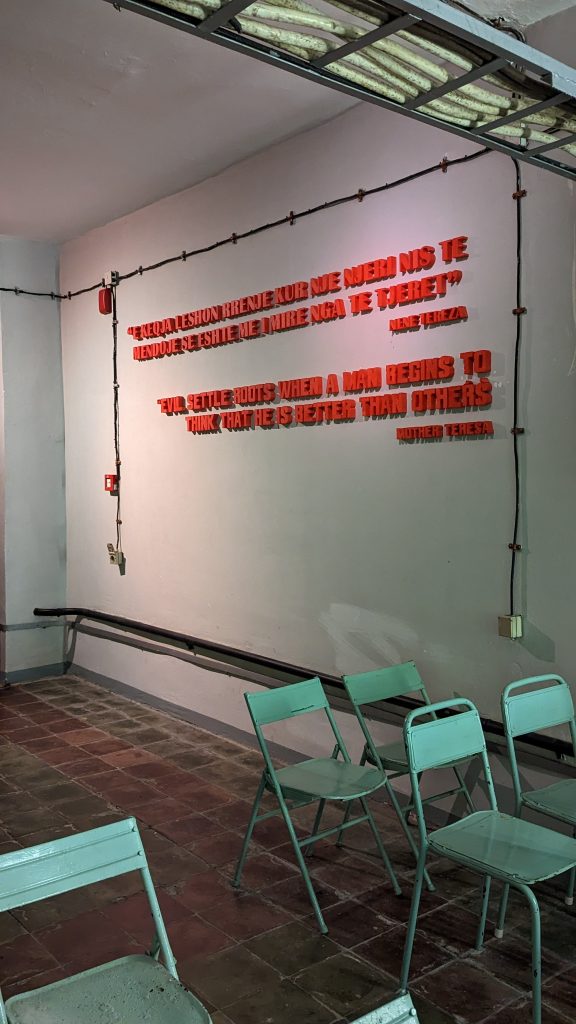
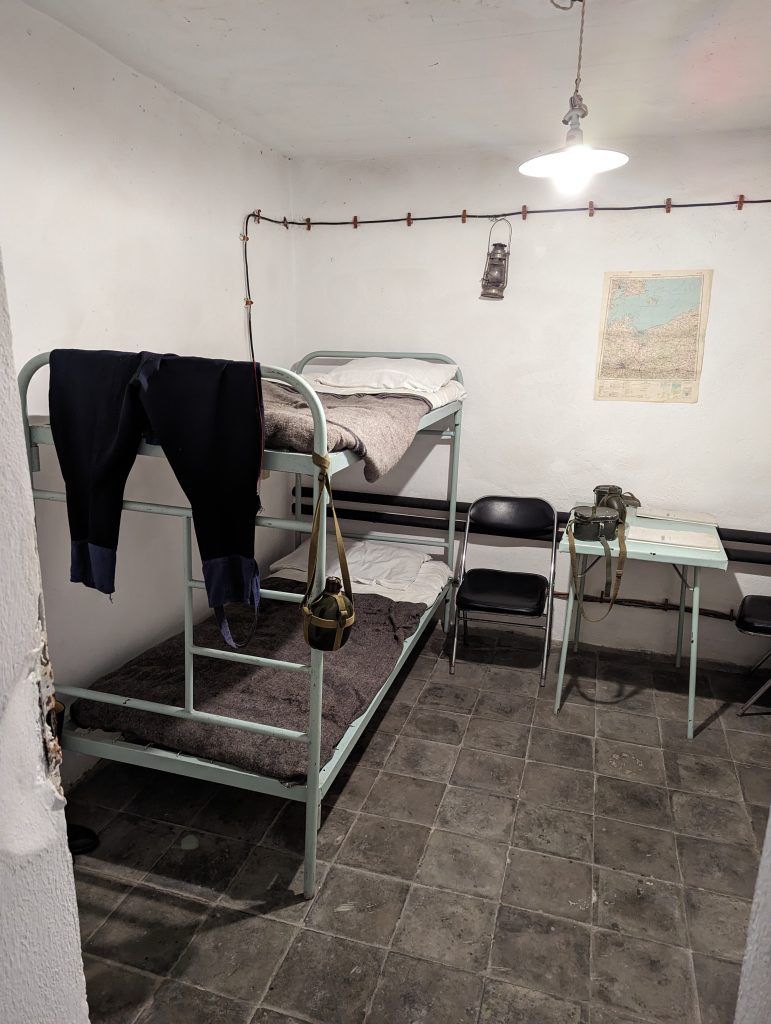
Something that you cannot miss is a visit to the Bunkers, specifically I visited Bunk’Art2 (the one closest to the center), and Albania is the country with the most bunkers in the world.
Day 9: Prizren (Kosovo)
Kosovo is without a doubt one of the best surprises of this trip to the Balkans. Since it is not recognized by the international community, be careful how you enter or leave the country if you do not want to be delayed in your tour of the Balkans. There are several buses that do this route daily for €15.
If you enter Kosovo via Serbia you will only be able to leave Kosovo via Serbia. If you do it from Albania or North Macedonia you can visit Serbia but to leave you must do so through the first two.
In addition to being very cheap, it is a super interesting place with a lot of history where I would have liked to stay one more day. You can go up to see the Prizren Fortress through the path that goes up behind the mountain and which is accessed along the river, the Sinan Pasha Mosque and something that was a pleasant discovery for me is the Kino Lumbardhi. Built during the former USSR in Soviet Yugoslavia more than 70 years ago, this is one of the cinemas that has operated for the longest time and is a symbol of resistance in the sector in addition to being a building that has been on the verge of being demolished several times. They show movies outdoors several times a week and their workers will give you a free tour inside and show you the movies and projection machines.
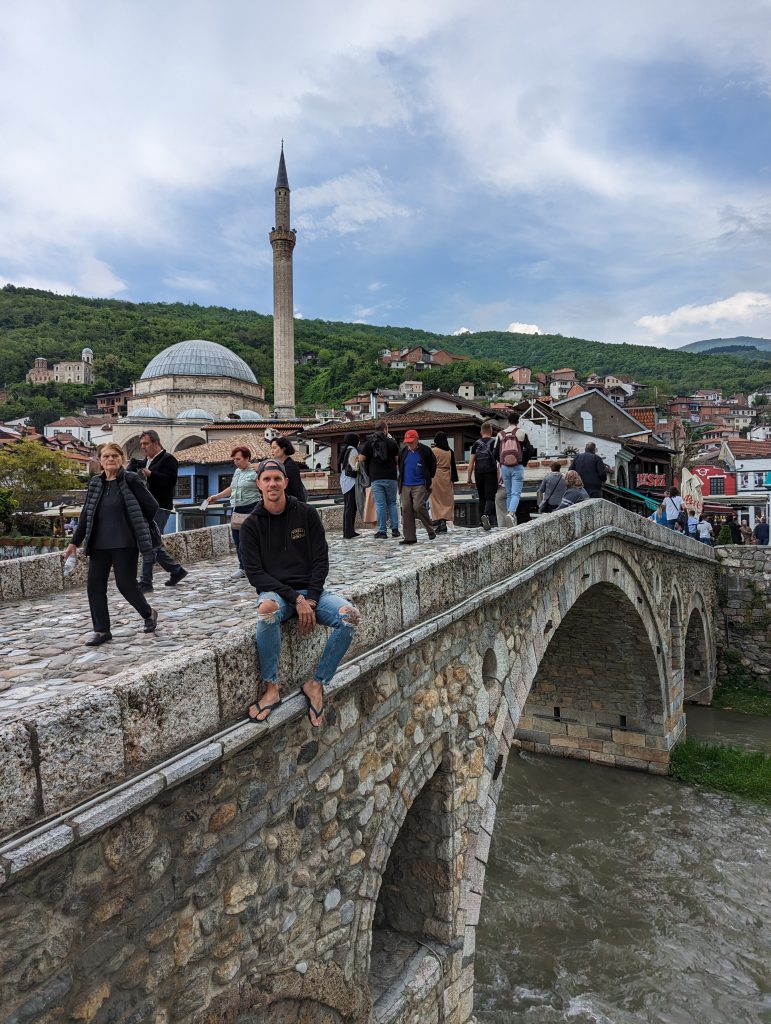
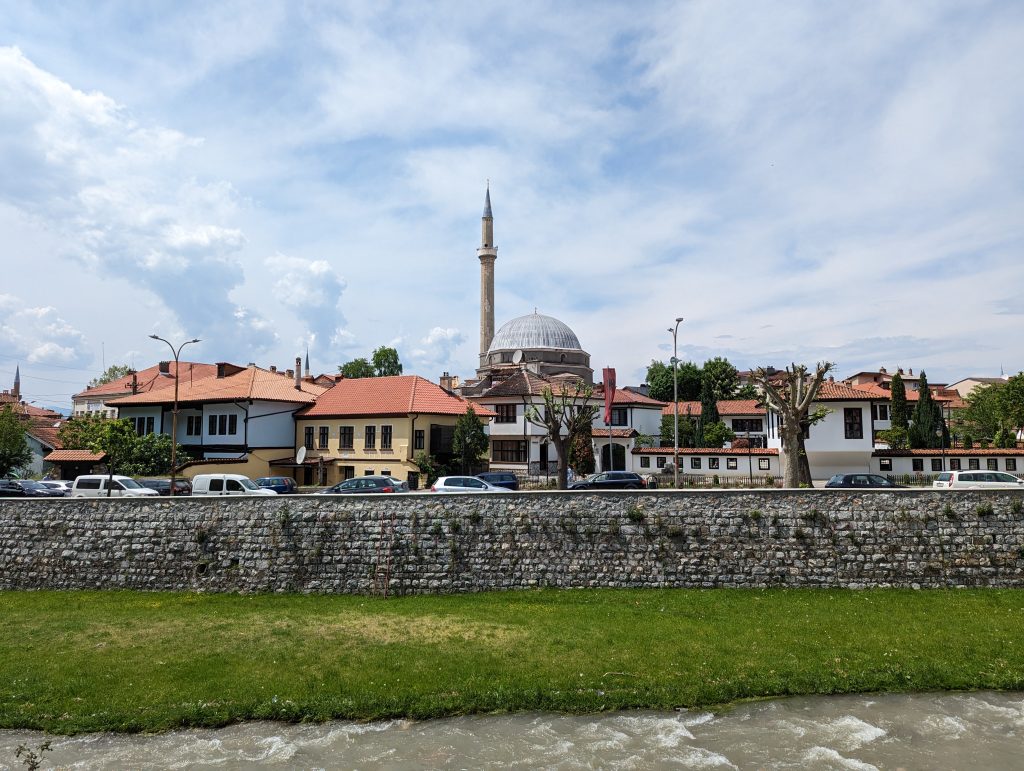
Days 10 and 11: Pristina (Kosovo)
Pristina like Podgorica does not have much to offer. It is a city with a particular and decadent style that is worth exploring, especially the area a little further north of the center where the Green Bazaar is located.
However, it is full of beautiful cafes and bokshops to discover.
Days 12 and 13: Skopje (North Macedonia)
Skopje is not a place like the others, you would not go to Skopje if you were not in the area and since I had to leave Kosovo to enter Serbia I decided to spend two days in Skopje.
Skopje is that city that someone without taste and with enough money to invest in “culture” would design. London buses, fake boats on the river, endless statues and bizarre classical style buildings copied from the main European cities. So the first day I dedicated to seeing the city and climbing to the top of the mountain to the Millennium Cross and the second day I took an excursion to the Natka canyon where you can go by bus for just over €1.
Days 14 to 16: Belgrad and Novi Sad (Serbia)
Belgrade is perhaps one of the best places in the region for those looking to party. As soon as we arrived that same night we went to a Techno Festival in the Kalemegdan Fortress, the historic center has many secrets that I recommend you discover with a Free Tour since Serbia is a country with a lot of history.
In addition to all this, we went to a football match of the legendary Red Star of Belgrade for only €4-5 where we could see the ultras cheering their team on incessantly. If you feel like putting miles on your legs, I recommend the walk along the river to the Gardos Tower in the Zemun neighborhood.
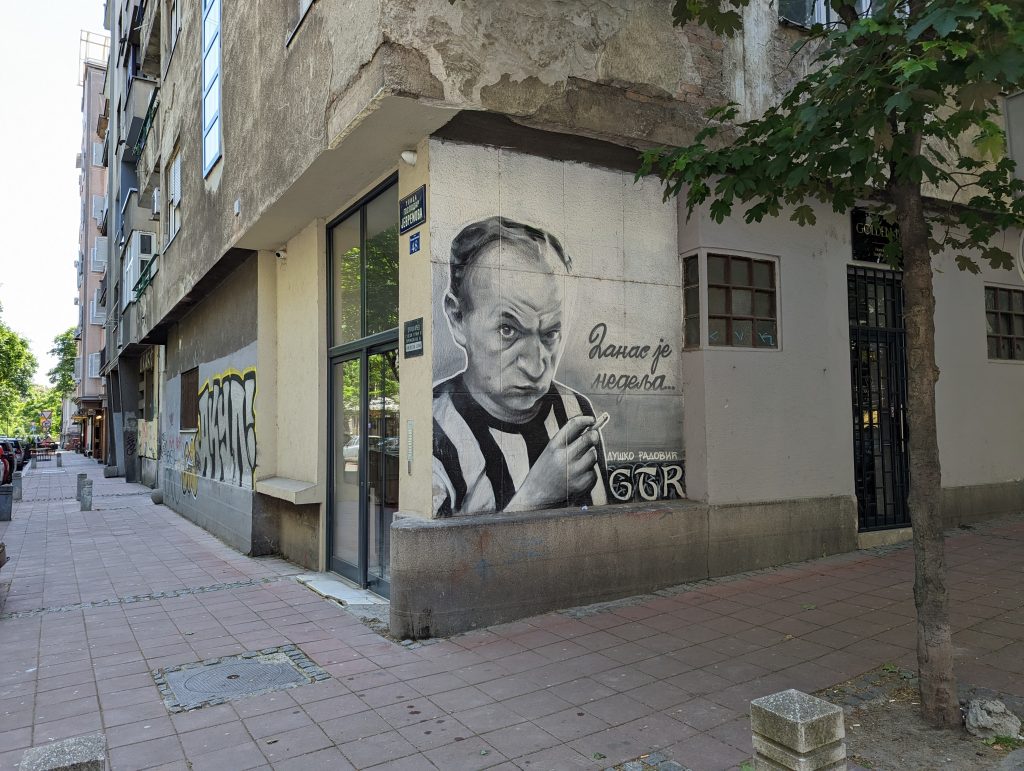
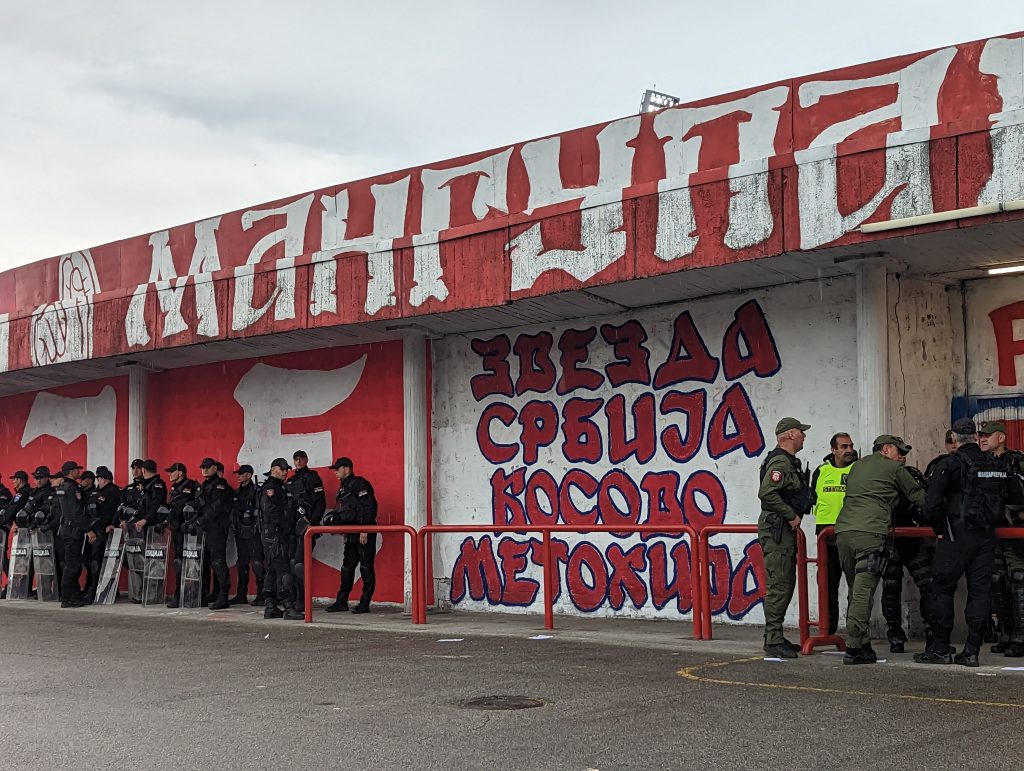
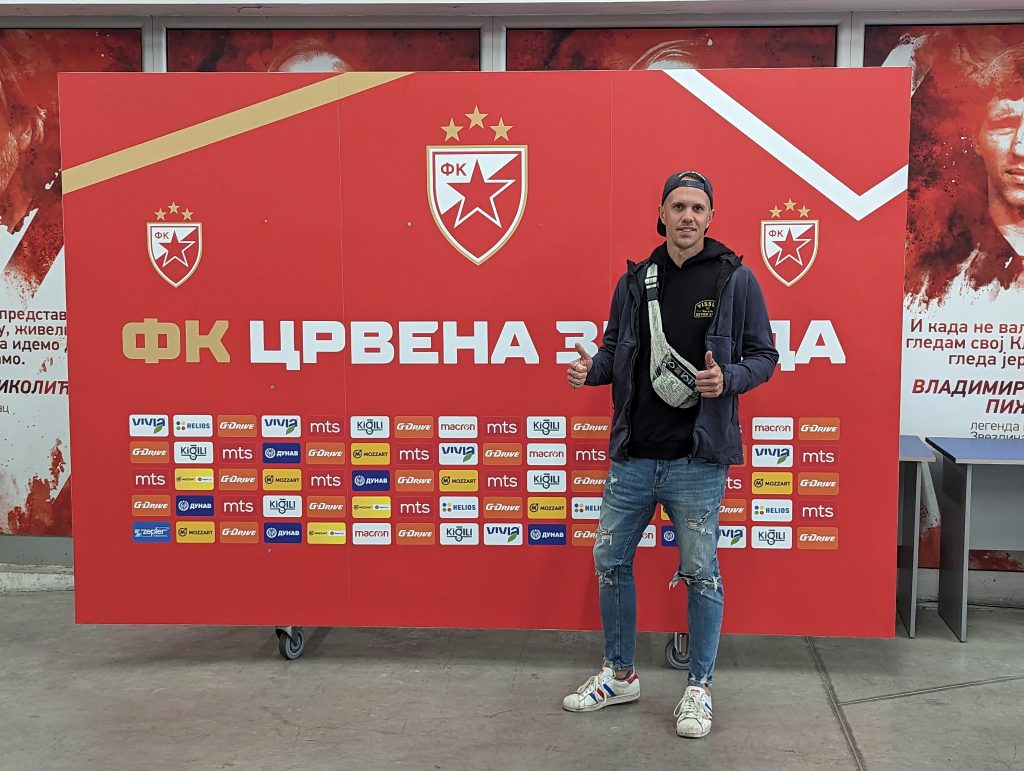
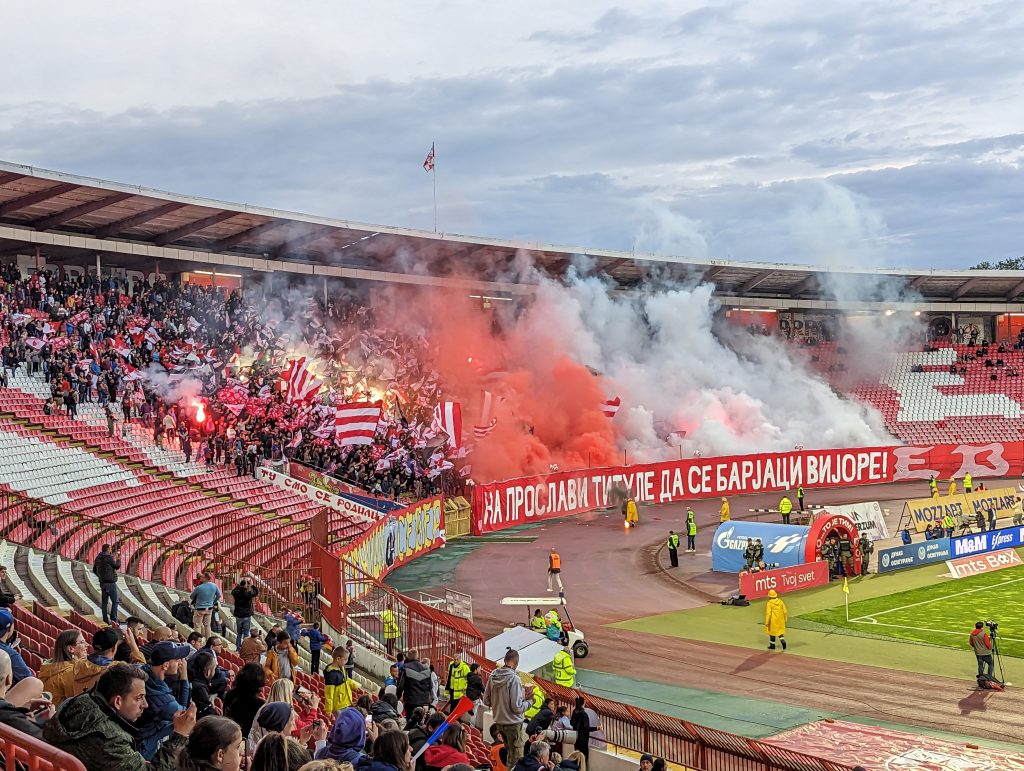
If you have an extra day, I recommend that you take the fast train to Novi Sad and spend a day in this beautiful city that looks fast but is worth it if you have the time. Don’t miss a visit to the Petrovaradin Catacombs.
Days 17 and 18: Sarajevo (Bosnia and Herzegovina)
Almost 14 hours by bus separate Belgrade from Sarajevo. It was an eternal trip with very little and bad sleep and with a bus change included. The trip costs about €30.
Sarajevo is, however, an exciting place, it is worth spending a couple of days there and exploring it up and down. The harsh war that was experienced in the city where family members killed each other and that to this day there is still a very harsh atmosphere in the city. Many buildings still have bullet holes in the walls and part of the city is destroyed.
There are several bars and restaurants with a very unique and characteristic style. My favorites Bar ČeGevara and Šahovski klub restaurant.
Days 19 and 21: Mostar (Bosnia and Herzegovina)
To get to Mostar from Sarajevo it is best to take the train, it costs about €7 and I recommend that you sit on the left side of the car where you will have the best possible views of the river, valley and mountains.
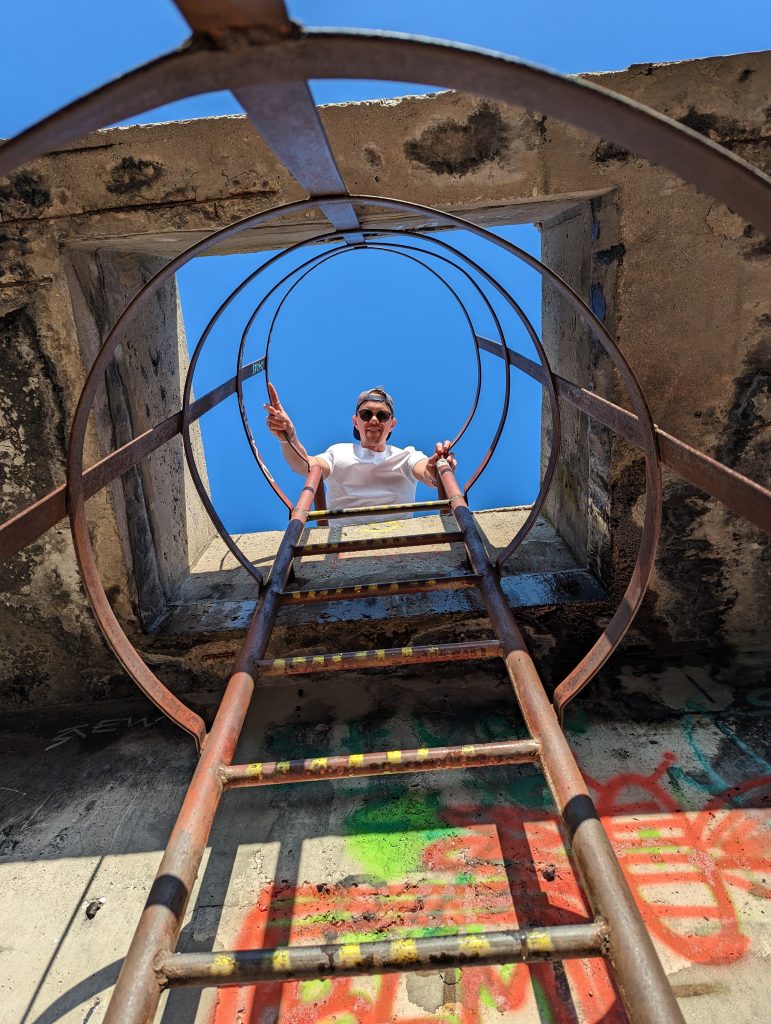
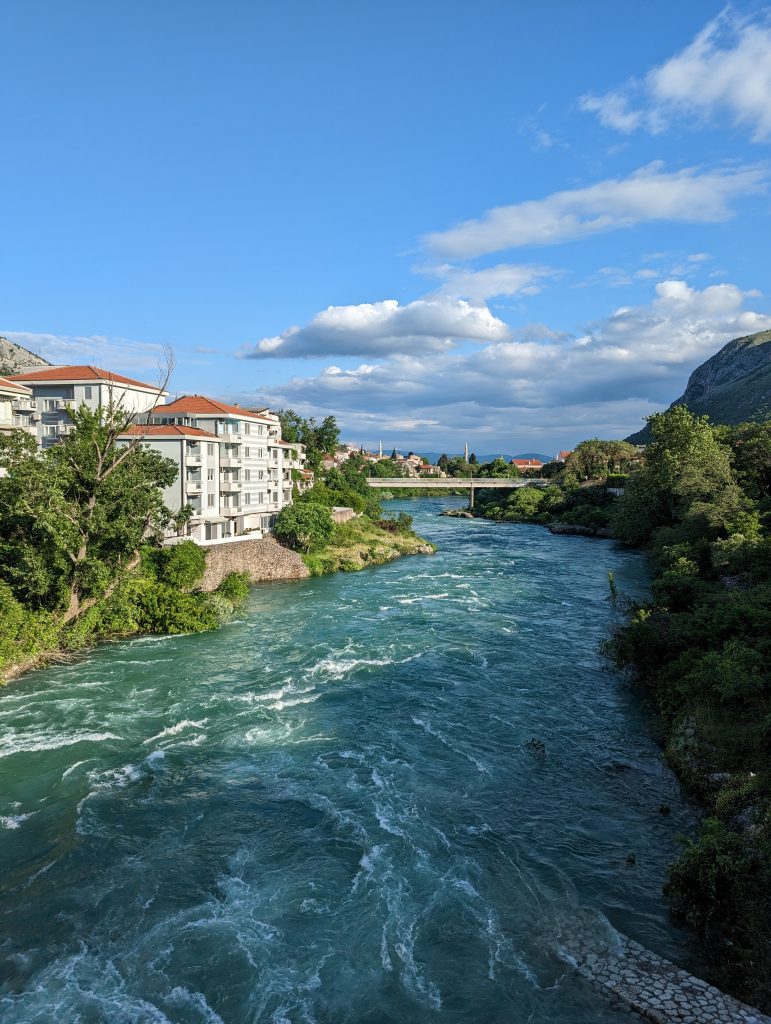
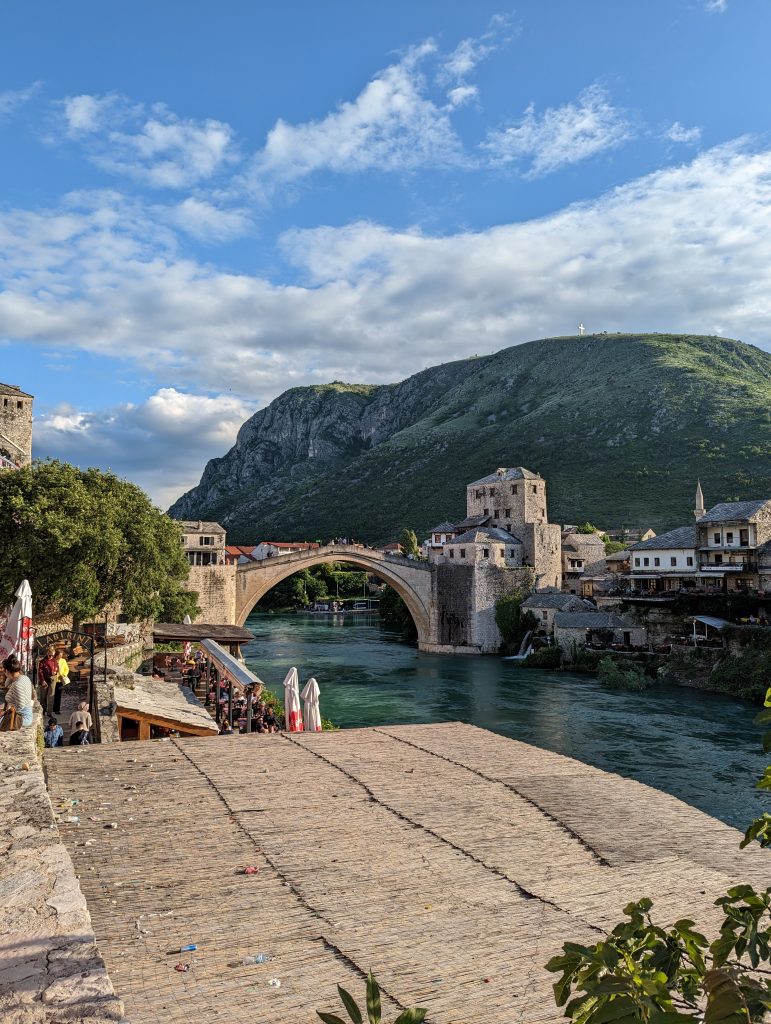
Mostar is a beautiful place although full of tourists and can be a bit overwhelming. The Mostar bridge is its biggest attraction, although my favorite place is an abandoned 7-story building that you can sneak into and investigate the inside to the roof. This was a position from which snipers protected this side of the bridge.
We also took a day trip to the Trebizat waterfalls, Vrelo Bune, and the Počitelj Fortress.
Days 22 and 23: Bled (Slovenia)
Another long and devastating journey to reach Slovenia. It was another 13-14 hours with a stop in Zagreb to change buses for a couple of hours before continuing to Ljubljana, where I bypassed to go to Bled.
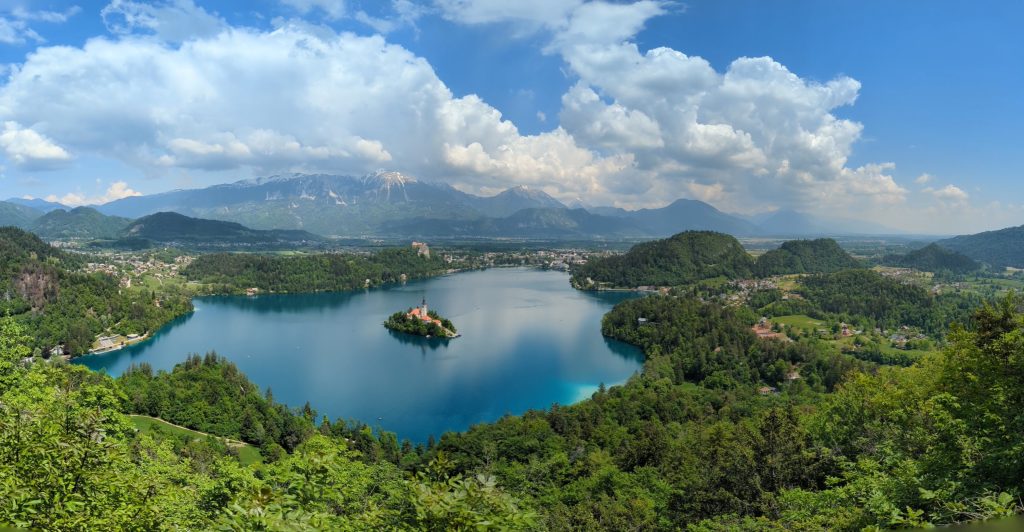
Bled is a beautiful little town at the foot of the Julian Alps. Bled is one of those places where you can stay for a week and if you like the mountains, you won’t finish it. There are plenty of beautiful routes around Lake Bled with its characteristic church in the center on an island. The second day we went to visit the Mostnice waterfall, a beautiful excursion of about 5 hours round trip through some beautiful valleys. It’s quite a few kilometers but it’s not complicated at all.
Day 24: Ljubljana (Slovenia)
Already a little tired and with my eyes set on my next destination in the UK, I took a very chill day in the Slovenian capital, Ljubljana, to visit some friends and see the historic center of the city. The old town of Ljubljana is beautiful, it has several bridges that cross the river and even a castle on top of the hill. Perfect getaway for a weekend.
Daily budget for traveling in the Balkans
Bled is a beautiful little town at the foot of the Julian Alps. Bled is one of those places where you can stay for a week and if you like the mountains, you won’t finish it. There are plenty of beautiful routes around Lake Bled with its characteristic church in the center on an island. The second day we went to visit the Mostnice waterfall, a beautiful excursion of about 5 hours round trip through some beautiful valleys. It’s quite a few kilometers but it’s not complicated at all.
Day 24: Ljubljana (Slovenia)
Already a little tired and with my eyes set on my next destination in the UK, I took a very chill day in the Slovenian capital, Ljubljana, to visit some friends and see the historic center of the city. The old town of Ljubljana is beautiful, it has several bridges that cross the river and even a castle on top of the hill. Perfect getaway for a weekend.
Daily budget for traveling in the Balkans
It is perhaps the best region in Europe to travel on a tight budget, especially out of season and away from the coast. Montenegro and Croatia become impossible and very expensive in summer. I was traveling between April and May and I would recommend this season.
Food: On this trip I was doing a mix of cooking and restaurants, a typical meal usually costs around €5 and on average I was spending around €7 a day.
Leisure: Tickets, tours, parties, everything adds up but it is 10 times cheaper than what it could cost you in Spain, Italy or any of these countries.
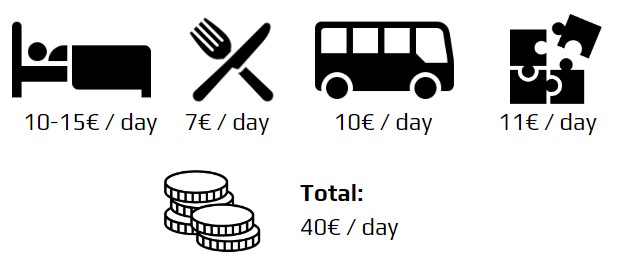
Accommodation: Most hostels cost around €10 on average and are usually equipped with a kitchen, and the rest of the facilities are quite new. The cheapest country Kosovo without a doubt.
Transportation: It is inevitable, you will have to take a lot of public transportation between one place and another and it is not cheap. Take advantage of the night buses to rest and save a night in a hotel.
Where to stay in the Balkans
The mood of the hostels changes radically compared to what is in South East Asia and Asia in general. But here are my comments
- Old Town Hostel // Kotor (Montenegro): Probably the best hostel you can stay in, quite comfortable rooms and clean bathrooms although too few for my taste. Ideal for people who travel alone since every day there is some plan. In summer it is very expensive.
- Montenegro B&B Hostel // Budva (Montenegro): It is nothing more than a building with rooms and bunk beds, it has no backpacker atmosphere, I would not return. Although it is quite clean, it looks more like apartments.
- Q Hostel // Podgorica (Montenegro): A super cool hostel on the outskirts of Podgorica, the bad part is that it is super far from the center, the good part is that the hostel has a unique and super retro look. Clean and renovated.
- Our Way Hostel // Shkoder (Albania): A very top hostel although a little old, the garden it has is great and it has a very good travel vibe. Ideal for meeting people.
- Trip’N’Hostel // Tirana (Albania): It has a bit of a strange vibe, it was very dirty and the staff was constantly partying and under the influence… I wouldn’t go back.
- URA Hostel // Prizren (Kosovo): Super central hostel, renovated and adapted for people with disabilities. Super clean and great staff.
- Prishtina Center Hostel // Pristina (Kosovo): The hostel itself, very difficult to find, it is not well located on Google Maps, it is on the 7th floor, the staff is horrible and the place is a little dirty but there are real travelers.
- Stay Inn Hostel // Skopje (North Macedonia): A little old, lacks a common area where you can meet other travelers, it was quite cold.
- Balkan Soul Hostel // Belgrad (Serbia): It is a party hostel, great for meeting other travelers and organizing plans.
- Balkan Han Hostel // Saravejo (Bosnia and Herzegovina): Very familiar hostel with a great chill out area to meet other travelers. Very clean rooms and bathrooms, the negative part is the somewhat limited entry time if the receptionist is not there.
- Majdas Hostel // Mostar (Bosnia and Herzegovina): The best hostel in the Balkans without a doubt, Majda will give you the best tips to discover the city and you should join their day tour that they organize every couple of days to see the surroundings from Mostar.
- Bled Hostel 2 // Bled (Slovenia): A fairly clean hostel, but too big for my taste, I was a little tired and didn’t socialize much, but I didn’t really like it either.
What to do if you have more time in the Balkans
You should probably visit Croatia or Greece if you haven’t been yet, I already was and skipped it this time. But without a doubt I would try to detour towards Bulgaria or Romania, especially Romania, which everyone spoke wonderfully about.

